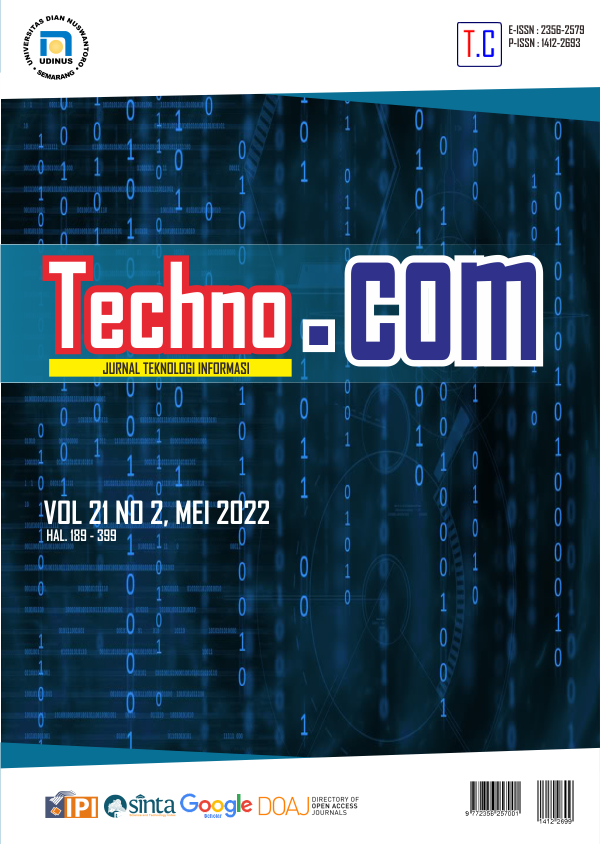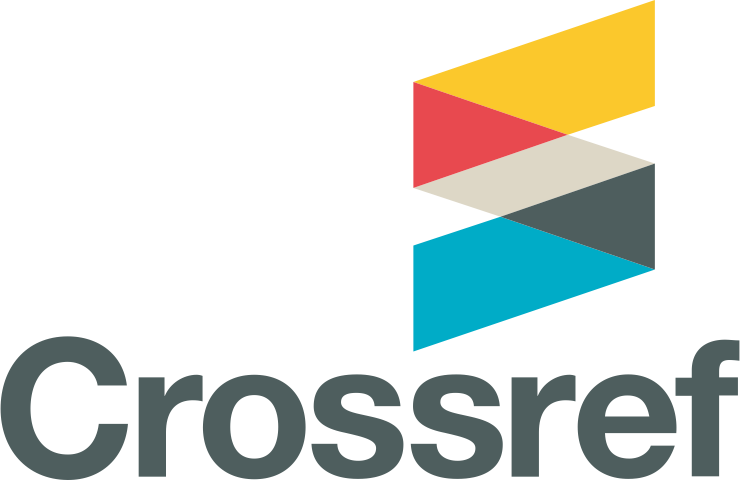Perkembangan Peran "Autonomous Underwater Vehicles" dalam misi Pencarian dan Penyelamatan: Sebuah Kajian Operasional
DOI:
https://doi.org/10.33633/tc.v21i2.6113Keywords:
Autonomous underwater vehicle (AUVs), Pencarian dan Penyelamatan (SAR), dan eksplorasiAbstract
Perkembangan wahana robotika bawah air telah mengkerucut pada dua jenis instrument secara umum yaitu, Remotely operated underwater vehicle (ROVs) dan Autonomous underwater vehicle (AUVs), digunakan untuk menggantikan manusia saat melakukan kegiatan bawah air dalam untuk tujuan komersial, militer, dan ilmiah. Makalah ini menggambarkan secara deskriptif perkembangan AUV khususnya dalam misi pencarian dan penyelamatan (SAR). Dalam perkembangannya, hingga kini sebagian besar teknologi AUV digunakan untuk memantau dan melakukan eksplorasi lautan baik dangkal maupun dalam, namun tidak menutup kemungkinan digunakan sebagai metode pencarian dan penyelamatan (SAR) seperti pada Model SAR M and SAR S workhorse AUVs yang digunakan secara bersamaan sebagai “master” dan “slave” untuk mengumpulkan data, serta kalkulasi rute terbaik untuk menemukan serpihan kompartemen pasca kecelakaan dengan menggunakan SAR-A* path planner, sehingga waktu pencarian dapat dimanfaatkan secara efisien.References
M. Papaelias, “Autonomous underwater vehicles : Instrumentation and measurements,” IEEE Instrum. Meas. Mag., no. May, 2020, doi: 10.1109/MIM.2020.9062680.
S. Chuan and J. J. Leonard, “Modeling and Simulation of the Autonomous Underwater Vehicle , Autolycus,” MASSACHUSETTS INSTITUTE OF TECHNOLOGY, 1999.
T. Hyakudome, “Design of Autonomous Underwater Vehicle,” Int. J. Adv. Robot. Syst., vol. 8, no. 1, pp. 122–130, 2011.
G. B. Skomal, A. Kukulya, and R. Stokey, “Subsurface observations of white shark Carcharodon carcharias predatory behaviour using an autonomous,” pp. 1293–1312, 2015, doi: 10.1111/jfb.12828.
G. Alfonso and E. Cuan-urquizo, “Autonomous Underwater Vehicles: Localization, Navigation, and Communication for Collaborative Missions,” 2020.
M. Afif, N. Habibullah, E. M. Budi, and E. Ekawati, “Pemodelan dan Rancang Bangun Autonomous Underwater Vehicle dengan Enam Propeller,” no. 3, pp. 10–11, 2015.
S. Venkatesan, “AUV FOR SEARCH & RESCUE AT SEA – AN INNOVATIVE APPROACH,” IEEE, pp. 1–9, 2016.
H. Uchihori, “The future of autonomous underwater vehicle control,” no. July, pp. 2–7, 2021, doi: 10.1002/adc2.86.
R. B. Wynn et al., “Autonomous Underwater Vehicles ( AUVs ): Their past , present and future contributions to the advancement of marine geoscience Autonomous Underwater Vehicles ( AUVs ): Their past , present and future contributions to the advancement of marine geoscience,” Mar. Geol., vol. 352, no. January 2015, pp. 451–468, 2014, doi: 10.1016/j.margeo.2014.03.012.
G. Meinecke, J. Albiez, S. Joyeux, V. Ratmeyer, and J. Renken, “OROCOS based control software of the new developed MARUM Hybrid-ROV for under-ice applications,” no. May 2014, 2013.
X. Xiang, Z. Niu, L. Lapierre, and M. Zuo, “Hybrid underwater robotic vehicles : the state-of- the-art and future trends,” HKIE Trans. ISSN, vol. 22, no. 2, pp. 103–116, 2015, doi: 10.1080/1023697X.2015.1038322.
F. . Azis, M. S. . Aras, M. Z. . Rashid, M. . Othman, and S. S. Abdullah, “Problem Identification for Underwater Remotely Operated Vehicle ( ROV ): A Case Study,” Int. Symp. Robot. Intell. Sensors 2012 (IRIS 2012), vol. 41, no. Iris, pp. 554–560, 2012, doi: 10.1016/j.proeng.2012.07.211.
N. Sakagami et al., “Development of a Human-Sized ROV with Dual-Arm,” IEEE – Sydney. Proceedings; 2010 May 24–27; Syd- ney, Aust. Washington, DC IEEE Comput. Soc. 2010., 2010.
J. P. Barry, “Revisiting the Challenger Deep using the ROV Kaiko,” Mar. Technol. Soc. J., vol. 43, no. 5, pp. 95–96, 2009.
F. Ferreira, R. Petroccia, and J. Alves, “Increasing the operational safety of Autonomous Underwater Vehicles using the JANUS communication standard,” in Proceedings of the 2018 IEEE OES Autonomous Underwater Vehicle (AUV), Porto University, Portugal: Discovering Sustainable Ocean Energy for a New World, 2019, no. May.
F. Jaffre, R. Littlefield, M. Purcell, and M. Grund, “Autonomous Underwater Vehicle,” Ocean. 2019 - Marseille, pp. 1–7, 2019.
J. Kong et al., “An AUV Path Planner for Large-scale Search and Rescue based on A * Algorithm An AUV Path Planner for Large-scale Search and Rescue based on A * Algorithm,” J. Phys. Conf. Ser., vol. 2050, no. 012017, 2021, doi: 10.1088/1742-6596/2050/1/012017.
Downloads
Published
Issue
Section
License
Copyright (c) 2022 Widiharto Widiharto

This work is licensed under a Creative Commons Attribution-NonCommercial 4.0 International License.
License Terms
All articles published in Techno.COM Journal are licensed under the Creative Commons Attribution-NonCommercial 4.0 International (CC BY-NC 4.0). This means:
1. Attribution
Readers and users are free to:
-
Share – Copy and redistribute the material in any medium or format.
-
Adapt – Remix, transform, and build upon the material.
As long as proper credit is given to the original work by citing the author(s) and the journal.
2. Non-Commercial Use
-
The material cannot be used for commercial purposes.
-
Commercial use includes selling the content, using it in commercial advertising, or integrating it into products/services for profit.
3. Rights of Authors
-
Authors retain copyright and grant Techno.COM Journal the right to publish the article.
-
Authors can distribute their work (e.g., in institutional repositories or personal websites) with proper acknowledgment of the journal.
4. No Additional Restrictions
-
The journal cannot apply legal terms or technological measures that restrict others from using the material in ways allowed by the license.
5. Disclaimer
-
The journal is not responsible for how the published content is used by third parties.
-
The opinions expressed in the articles are solely those of the authors.
For more details, visit the Creative Commons License Page:
? https://creativecommons.org/licenses/by-nc/4.0/












